.
From Clanwilliam we tackle the Pakhuis Pass over the Cederberg towards Wuppertal.
It is on this pas that you find the gravesite of well-known S A paediatrician, botanist, cook, and, above all, poet...
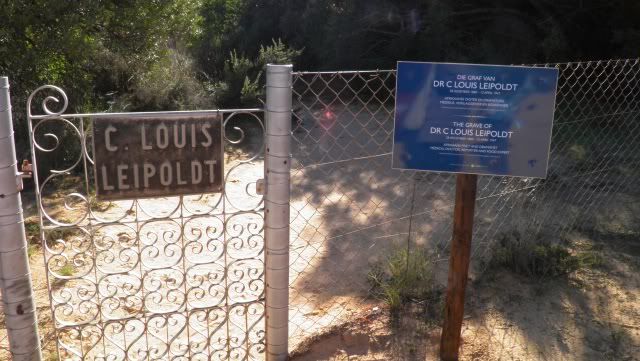
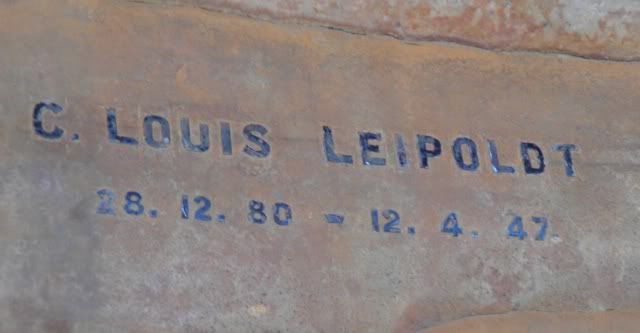
Leipoldt wrote much about nature in general and in particular about the landscapes and legends of his beloved Hantam. His poetry also deals with the suffering caused by the Second Boer War and the culture and values of the Cape Malays. Most of his work does not translate well into English. If you can read and understand Afrikaans be sure to read "Oktobermaand" and "In die konsentrasiekamp".
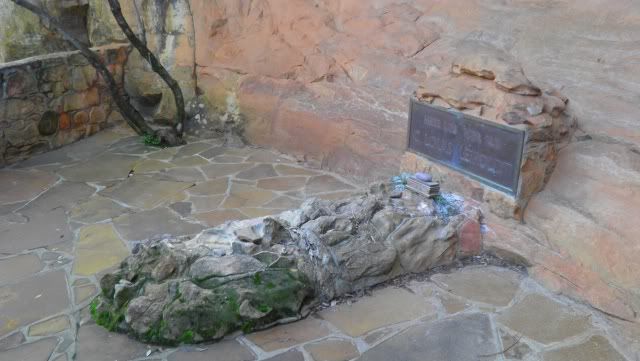
There's a geocache nearby and of course Kermit was the one who found it. He has a knack for this.
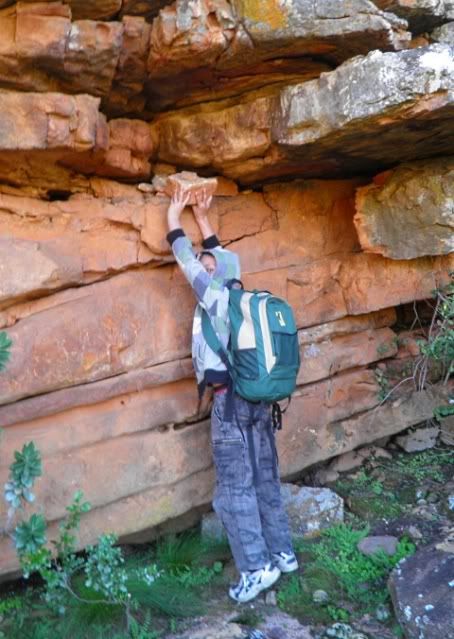
The Pakhuis Pass, originally built by Thomas Bain to link Clanwilliam and Calvinia, was opened in April 1877. Although it was widened during the 1960’s it remains a scenic road and a proud addition to my quest.
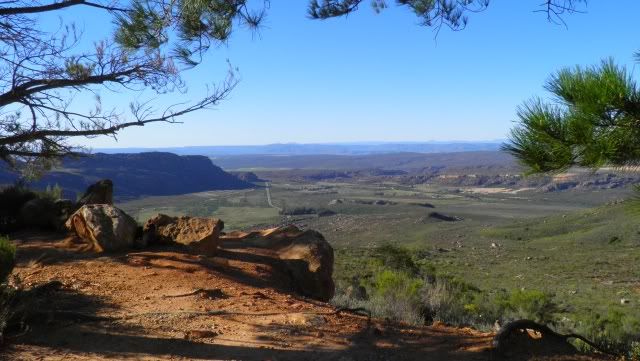
A small sign near the dirt road for the Wuppertal turnoff points to “The Englishman’s Grave.” I've been here before...
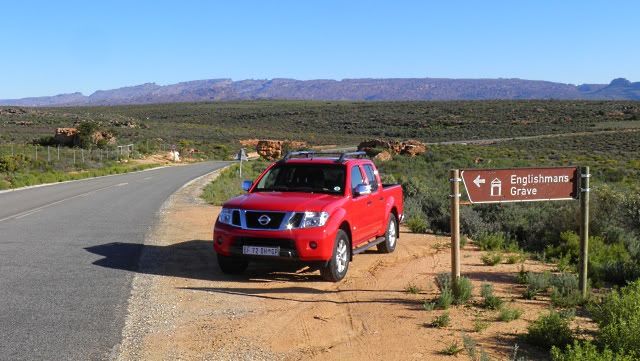
The headstone is in the form of a Celtic cross and bears the words “BRAVE AND TRUE.” At the base of the cross is inscribed:
In sacred and loving memory of Graham Vinicombe Winchester Clowes Lieutenant 1st Battn. the Gordon Highlanders… killed in action near this spot on 30th January 1901.

Lt. Clowes’ Gordon Highlander regiment was famous in South Africa. It had suffered a catastrophic defeat in the battle of Majuba Hill that concluded the lesser-known First Boer War of 1880-1881 (British casualties at Majuba, 280; Boers, 1). When the Second Boer War started in 1899, British soldiers who had a spirit of revenge would run into battle shouting, “Majuba! Majuba!” That word had been chanted at Elandslaagte, when the 2nd Gordons wore their kilts into battle.
Lt. Clowes’ 1st battalion shipped out to Cape Town after Elandslaagte, arriving just in time to march out for the ill-fated battle of Magersfontein. By the end of it British casualties numbered 902, compared with 200 for the Boers, and they had made no advance: a disaster. Lt. Clowes lived a year and two months longer, only to fall victim to a small band of Boer guerillas on an ordinary summer day.
The soldier’s mother had journeyed all the way from England after the war to find this remote spot and have the memorial erected. (source)
Finally we leave the tarred road behind and hit the gravel towards Wupperthal.

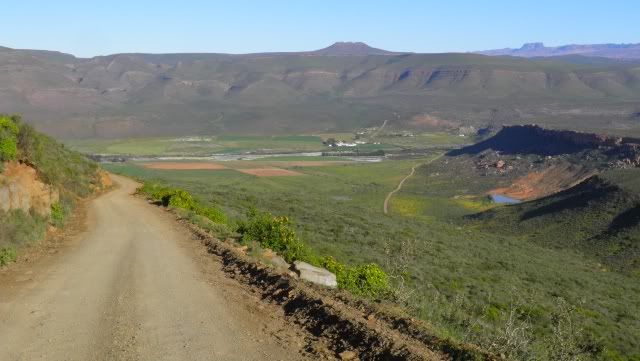
Wupperthal is a small town in the Cederberg mountains. It was founded in 1830 by two German missionaries of the Rhenish Missionary Society, Theobald von Wurmb and Johann Gottlieb Leipoldt, grandfather of C. Louis Leipoldt - some 100 years before the city of Wuppertal was formally established in Germany. In 1965, after the Rhenish Mission had gradually scaled down their activities in Southern Africa over a period of 40 years, a decision was taken that Wupperthal in future should become part of the Moravian Church, which by that stage had already made the transition from a mission to an autonomous church in South Africa. The town remains a Moravian mission station to this day.
But it was late afternoon already and we had to push on if we didn't want to get caught in the dark in the mountains before we reached our camp site.
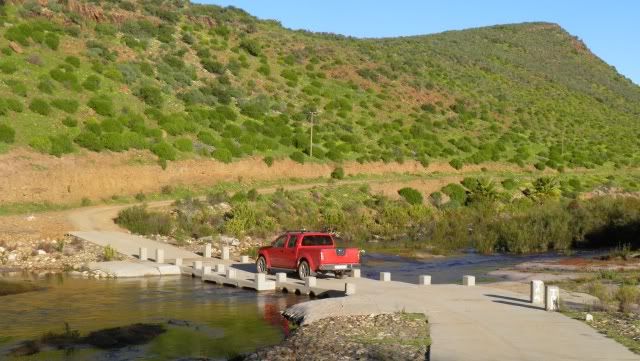
Eselbank Pass lies between Wupperthal and Eselbank, a small settlement near our camping spot. On the Tracks4Africa GPS system it is described as "Bad off-road". Of course I did not tell the wife this beforehand.
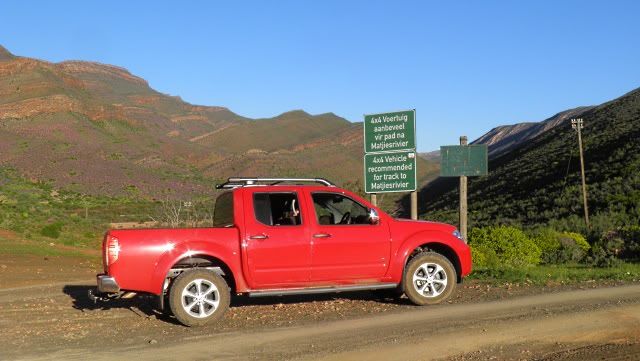
The pass is a single track road and we spotted two vehicles coming down the pass, so we waited. When they got to the bottom the wide-eyed occupants described it as hair-raising.
Starting the ascent - looking back towards Wupperthal:
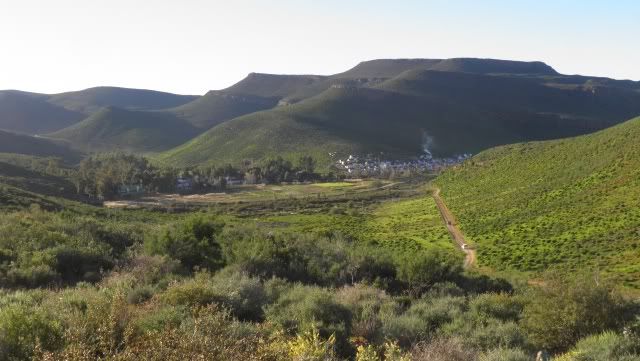
The track climbs higher and higher. I have done this pass before in both directions, but always on a bike. It's different in a 4-wheeled vehicle. The road seems so narrow...

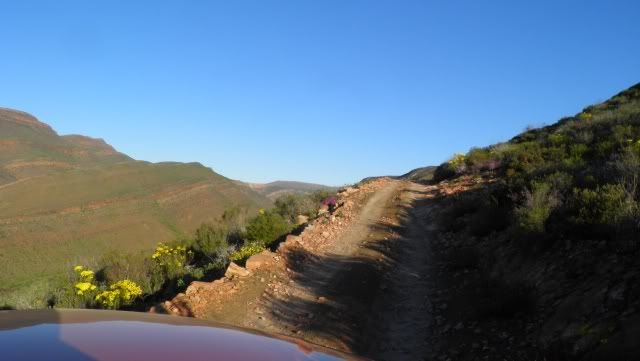
Some of the really steep sections are cemented:

And finally we reach the top - I didn't know my wife's knuckles could get that white!

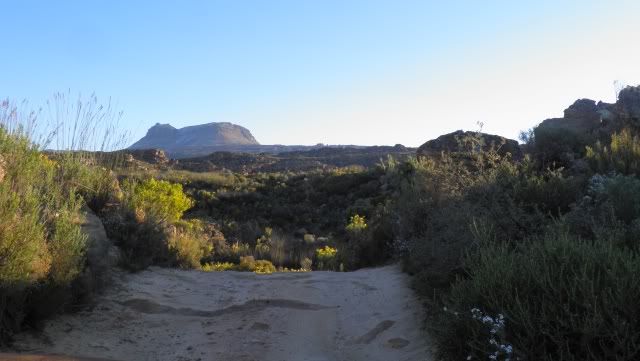
The Navara took it in it's stride. The road is not that bad. Just a bit unusual.
The start of the beauty of the Cederberg:
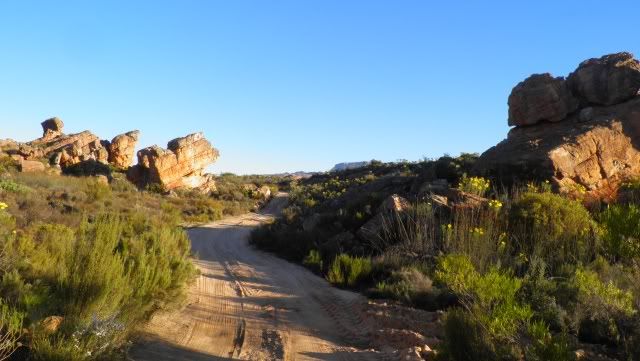
And soon we reach Eselbank (more about the settlement later):
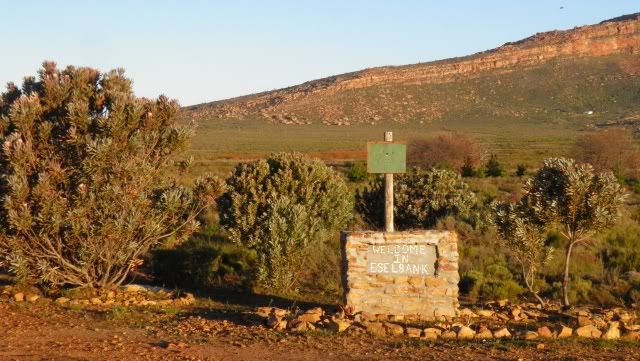
About 2km out of Eselbank, towards the waterfall, we find White Stripes and the rest of the gang with the camp already set up!
 With the sun setting already we settle in.
With the sun setting already we settle in.
As the sun goes down the temperature plummets and we get the fires going. Remember we are camping out in the open. There are no luxuries like running water or electricity. It's just us, camping next to the road in the mountains.
Early that evening some of the Eselbank villagers came over to see if we're OK.
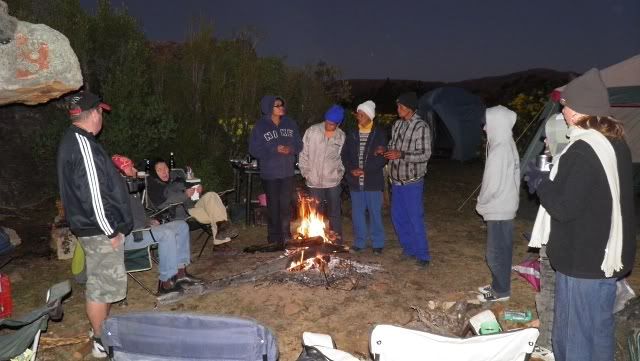
These locals are a wealth of knowledge and can tell you endless stories about the area.
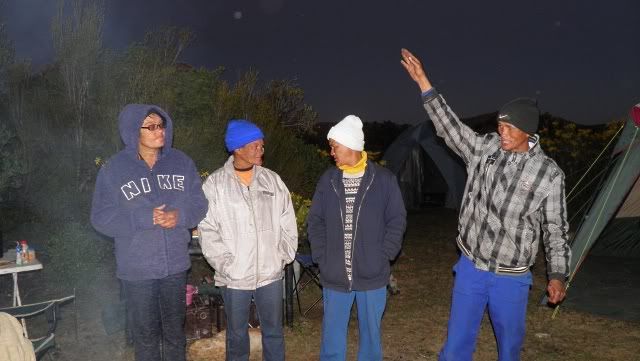
We also used the opportunity to ask them about "Die Riel". Die Rieldans is the oldest dance form in Southern Africa and can be linked directly to the Khoi-San, the first inhabitants of the area. The Khoi-San danced in a circle around the fire after a successful hunt or harvest and some of the same dance moves are still used today.
The dance is only found in some areas of the Northern Cape, Karoo and Southern Namibia, where the Nama people call it "׀khapara". In Afrikaans it became known as "Die Riel" because of it's similarity to the Scottish “reël”.
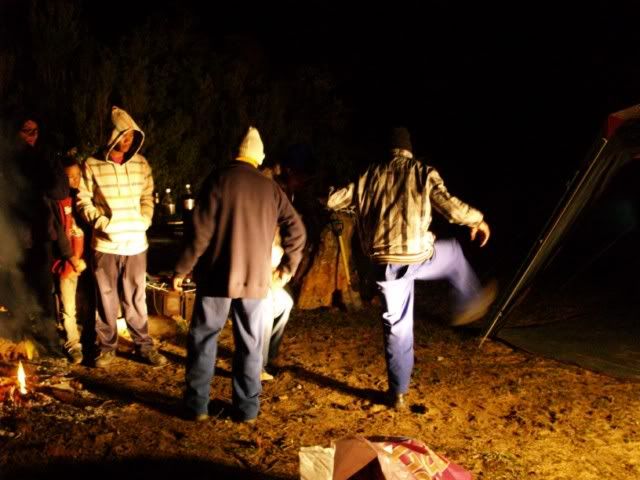
(Photo by Rustyb)
The dance tells a story, or illustrates love-play and to illustrate it animals or birds are often mimicked. "Die askoekslaan" is the most well known move, where the right foot is placed on the left knee, in a fast and accurate motion. This is a huge part of these people's culture and what a privilege to see it performed first hand in the Cederberg mountains.

(Photo by Rustyb)
The Rieldans is being revived and it proves to be hugely popular with participants and observers alike. Here is a small video made at a recent competition (it is in Afrikaans, apologies to international readers).


.
No comments:
Post a Comment